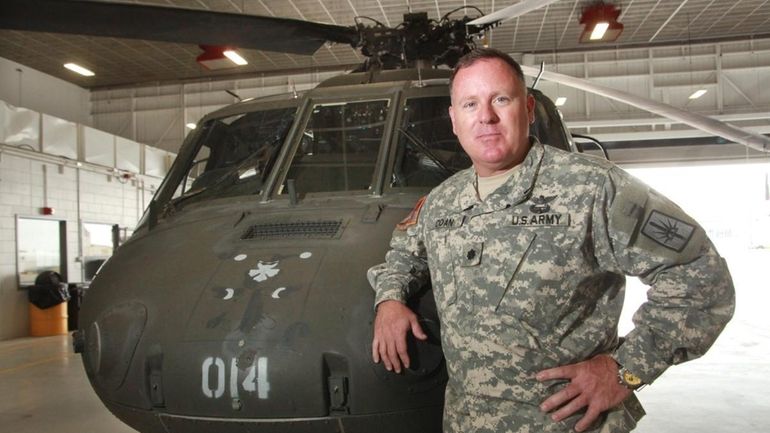Katrina experience shaped National Guard's plan for LI

Lt. Col. James Coan, Deputy State Army Aviation Officer, is shown with one of the helicopters at the New York Credit: Newsday/John ParaskevasAir National Guard's aviation support facility at MacArthur Airport. (Aug. 26, 2010)
As National Guard helicopter crews from Long Island flew over the devastation of Hurricane Katrina in Mississippi and Louisiana crew members realized they were not prepared should a similar storm hit back home.
Acting on lessons learned five years ago this Saturday, New York's Guard has refined its emergency plan, said Lt. Col. James Coan, an Oakdale resident who helped lead the state's Task Force Empire response to Katrina during the 2005 disaster.
Only 25¢ for 5 months
As National Guard helicopter crews from Long Island flew over the devastation of Hurricane Katrina in Mississippi and Louisiana crew members realized they were not prepared should a similar storm hit back home.
Acting on lessons learned five years ago this Saturday, New York's Guard has refined its emergency plan, said Lt. Col. James Coan, an Oakdale resident who helped lead the state's Task Force Empire response to Katrina during the 2005 disaster.
The Guard has since divided the state into five sectors, designating 300 "task force" personnel in each to be responsible for initiating disaster relief.
Long Island has its own designated "Task Force 2." But if a hurricane left the local Guard personnel unable to respond on their own, the state has plans to bring task force personnel to the Island from other sectors for the initial hours of a crisis.
The Guard has also pre-positioned food, water, medicine, tents and equipment in locations around the state - including at Francis S. Gabreski Airport in Westhampton Beach - to allow Guard personnel to do relief work for several days without having to be resupplied.
"It's the same as when we go to war," said Chief Warrant Officer Bruce Hoffmann, a Guard pilot who participated in the Katrina effort.
When Katrina hit, many of Mississippi's National Guard helicopters were ineligible for duty in the initial hours after the hurricane because they had been flown too many hours while being repositioned out of the storm's path.
Meanwhile, emergency workers in Louisiana were often so occupied with rescuing their own families that they were unable to report for duty.
And rescue crews who flew to isolated hamlets realized they were not able to anticipate critical needs that went beyond food, water and ice. In one case, they needed a dozen baby bottles, plus infant formula. In another, a generator to power a breathing apparatus for a stranded elderly patient.
"When we saw the devastation we said 'Wow, what if this had been Long Island?' " said Coan, who flies Blackhawk helicopters out of the Army National Guard air station in Ronkonkoma. "Every day we learned new lessons and said, 'What if this had been New York?' "
Coan said Guard personnel who responded during Katrina found much effort was wasted bringing supplies that weren't needed, while less-anticipated needs - perhaps diapers in a hamlet crowded with young families - went unmet.
"You need to go in, deliver your supplies, then shut down and engage with the people," he said. "You need to learn the personality of each community you're serving, and tailor your packages to them."
Totally tubular trips ... LI Works: Talking turkey ... Get the latest news and more great videos at NewsdayTV

